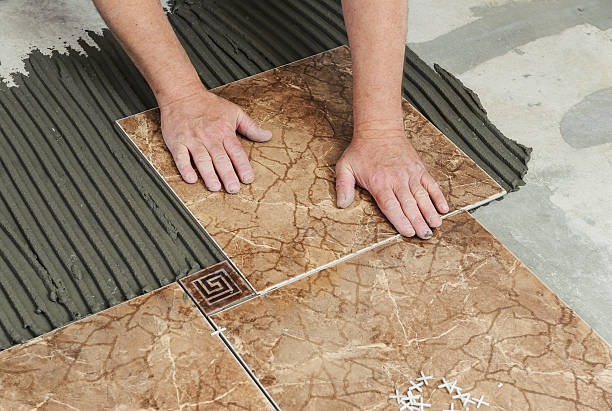When you’re deciding on the best tile for your commercial or residential space it is essential to take into consideration several factors that affect the appearance and functionality. These aspects, including cost and durability, slip resistance and water absorption will help you tailor your tile choices to your particular needs.
Cost
Ceramic and porcelain tiles, although they have the same name are two different things. They are both kiln fired tiles made from clay, but have different water resistance and longevity. Selecting the best tile can aid in balancing aesthetics and cost for your space.
Ceramic and porcelain tiles provide various styles that can be customized to any taste. Ceramic tiles can be used to create modern and sleek spaces while also imitating the texture and warmth of natural materials such as stone and wood.
Porcelain tile is denser and stronger than ceramic. It is able to withstand heavy foot traffic, high humidity levels, and cold temperatures.
The hardness and density are not without cost however, since it is more costly to make and install. Ceramic however is much softer and porous. It’s easier to cut than porcelain, which can make it an ideal option for DIYers. However, it is more brittle, which means it could require professional installation in certain instances. It also has a lower absorption rate, which makes it more suitable for areas that are exposed to humidity.
Durability
Depending on their intended use and the purpose for which they are intended, the costs of maintenance with each tile will differ. Ceramic tiles are more durable and resistant to water and heat than ceramic tiles. Porcelain is also more durable, which means it will last longer and will stand up to foot traffic that is heavy.
Glazed porcelain tile is coated with an anti-smudge glaze that is resistant to staining and bacterial. It is therefore a great option for kitchen backsplashes and other areas that are subject to a lot of humidity. It is also scratch and chip gach bong 20×20 resistant, which makes it ideal for a variety of designs.
Inkjet technology allows you to print digitally any image or design onto porcelain. This enables reclaimed wood or rare stones, as well as other distinctive aesthetics to be accurately replicated. This technique has the benefit that it minimizes environmental impact and prevents the cutting down on natural materials. This makes it ideal for commercial and residential projects that are geared towards the durability. It is vital to make sure that the tile you end up with is in line with industry standards.
Maintenance
The type of tile you choose affects the range of aspects, including the initial cost, installation requirements and ongoing maintenance needs. Ceramic tiles are ideal for areas that are susceptible to moisture, whereas ceramic tiles provide a gorgeous option for a much lower price.
Both provide stunning options for the client’s space. But if your client’s design goals include a long-lasting lifespan of their flooring, porcelain may be the best choice. It is denser, more durable and less susceptible to chipping, as well as more resistant to stains and moisture than ceramic.
The porosity can affect the performance of ceramic tiles over time. Ceramic tiles absorb water faster and absorb between 3% and 7% of their weight per square inch. It is therefore not an ideal choice for areas where there is moisture, since mildew and mold may grow or there may be damage from freeze-thaw cycles. The surface is more prone to staining, specifically from acidic foods, and requires frequent cleaning. Ceramic tiles are more costly to purchase and install because of their density. It can be expensive to renovate a house.
Style
It can be difficult to select the right tile for your particular project. An incorrect choice could lead to costly replacements, maintenance headaches and design blunders that can will last for a long time.
It’s crucial to be aware of the differences between ceramic and porcelain so that you can select the right tile for your home. If you’re looking for the durability, design flexibility and moisture resistance porcelain could be the best option for your next venture.
The porcelain tiles that are glazed or non-glazed, are made from clays that have been refined with pigments. They’re then cured by firing. Through this procedure, they’re exposed to higher temperatures for longer periods than ceramic tiles. This results in porcelain tiles that are more dense, harder and less porous. They are therefore ideal for high-traffic and commercial areas. Ceramic tiles are, however are more susceptible to wear and tear and break more easily than their counterparts made of porcelain. They’re also not aswaterproof, andaren’t recommended for use in spaces where there is a lot of moisture or humidity.
The Best Tile for Bathrooms or Kitchens
The tile you choose to use for a kitchen or bathroom could make a significant difference in the style and performance of your space. Ceramic and porcelain tiles are suitable for walls and floors. But, both possess their own advantages.
Ceramic and porcelain tiles are available in many colors, sizes and designs to fit your preferences. You can choose from traditional square or rectangular shapes, eye-catching geometric designs, or even large-format tiles that give a sleek, modern look with less grout lines.
Porcelain tiles have lower absorption rates when compared to ceramic tiles, making them the better choice for wet areas such as the patio or bathroom. The high-end finishes can resemble natural stones or wood for an elegant look and are more resistant to staining than ceramics. Porcelain tiles cost more and need professional installation since they’re denser. Additionally, their glazed surfaces may wear away in high-traffic areas, showing the tile’s color underneath.

